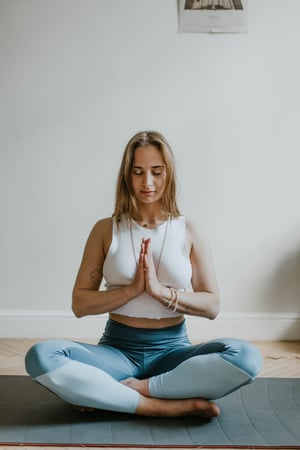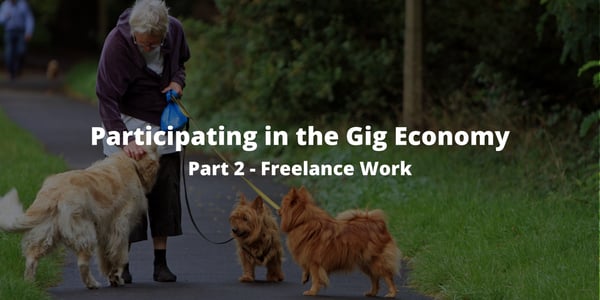In our recent blog (Participating in the Gig Economy: Part 1 - Driver and Delivery Jobs), we...
Understanding the Connection of Good Breathing to Health
Breath is life force and essential to supporting all the functions and systems in our bodies, thereby regulating health. As we age and go through the trials and tribulations of life, it is common that we adopt patterns of breathing that are not optimal. Some of those patterns include mouth breathing, erratic breathing, breath-holding, and even reverse breathing.
All of these patterns affect how much the diaphragm, our primary breathing muscle, is able to contract and release, corresponding to vagus nerve stimulation, the brain-gut connection, and our body’s relaxation response.
The vagus nerve is the longest in the body, running from the brainstem to the gut. Simulating the vagus nerve activates the body’s relaxation response, reducing heart rate and blood pressure.
So, how do we stimulate the vagus nerve? By first bringing attention to our current breathing pattern, and then beginning to activate the diaphragm as we breathe, taking slow, deep breaths.

According to The Cut, “The vagus nerve is essentially the queen of the parasympathetic nervous system — a.k.a. the “rest and digest,” or the “chill out” one — so the more we do things that “stimulate” or activate it, like deep breathing, the more we banish the effects of the sympathetic nervous system — a.k.a. the “fight or flight,” or the “do something!” stress-releasing adrenaline/cortisol one.”
As described on Visible Body, “The vagus nerve serves as a pretty direct line between your brain and your viscera, keeping track of and reacting to interoceptive signals (that is, information about what’s going on inside your body)."
Putting the Knowledge into Practice
So check in:
- How well do you breathe?
- How would you describe your mood and energy level?
- Do you generally breathe through your nose or your mouth?
Mouth breathing is also known as over-breathing, dysregulating the balance of CO2 to O2 in the body. To get back to better breathing, start to practice 10 minutes a day of nose breathing.
Place one palm on your belly and one palm on your chest. As you breathe in and out, what is moving? Does your belly expand as you breathe in and fall as you breathe out? Does your breath reach your stomach, or is it your chest that puffs out as you breathe?
If so, this is indicative of a chest breathing pattern and potentially a reverse breathing pattern.
 You want your diaphragm as the primary driver of the breath. The diaphragm lies horizontally, like a tent across the base of the ribcage, contracting and descending on the inhale to draw breath into the lungs, lengthening and ascending to send the breath out of the lungs. When this muscle is doing its job well, you will also experience a broadening of your ribcage outwards with your inhale and a release inwards with your exhale. Take ten more breaths to see if you can feel this in your body. Practice directing your breath into your belly. There should be very little movement of your upper chest muscles as you breathe.
You want your diaphragm as the primary driver of the breath. The diaphragm lies horizontally, like a tent across the base of the ribcage, contracting and descending on the inhale to draw breath into the lungs, lengthening and ascending to send the breath out of the lungs. When this muscle is doing its job well, you will also experience a broadening of your ribcage outwards with your inhale and a release inwards with your exhale. Take ten more breaths to see if you can feel this in your body. Practice directing your breath into your belly. There should be very little movement of your upper chest muscles as you breathe.
If your chest muscles are doing all the work, then this will cause hypertension and pain in your shoulders, jaw, neck, and into your head.
Practice a little longer, a few more breaths.
Finally, once you start to feel your breath moving downward and your diaphragm engaging, now begin to gently lengthen your exhalation. Try a four-count inhalation to a six-count exhalation. Try this for 5 minutes.
At the end, pause and see how you feel? Can you feel that deeper relaxation response settle in your body? Is your mind calmer?
What has shifted?
As somayoga therapists, Resolve Pain Guru encourages all their clients to explore better breathing to support better health. You are worth it! To continue learning, visit their website’s Learn page and be led through a 9 minute guided breath awareness practice.
And to connect with other practices to support healthy aging, sign up to their blog or subscribe to the Resolve Pain Digital On Demand Channel.






